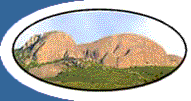Leopards amongst us
2007-09-06
Lise Beyers
WE are not alone!
This has become evident after an elderly dog narrowly escaped being mauled to death when he was attacked by a leopard at the foot of the Drakenstein Mountains.
Danny, a Staffordshire terrier-cross, was recently having a siesta under a tree on Olive Glen farm outside Paarl, while his owner, Fiona Powrie, was inside.
“At about 17:30 we heard the dogs barking hysterically.
“When we went outside, a blood covered Danny ran inside.
“I immediately grabbed him and put him in my vehicle to take him to the vet.
“Meanwhile my brother went to pick up Danny’s fleece from under the tree and a little way up the slope in the fynbos he saw a fine speciman of a leopard swishing his tail in disappointment.”
Danny was taken to Market Street Veterinary Clinic in Paarl for treatment. He had deep gashes to his side from the leopard’s claws and had been bitten on the neck.
“Danny is already twelve years old and he really is lucky to be alive.
“Though I didn’t personally see the leopard, my brother said that it looked like a young male in very good condition.
“I have previously also seen a leopard higher up on the cliffs.”
Leopards are no strangers to the mountains surrounding Paarl.
Some were even spotted on Paarl Mountain until a decade ago.
Currently it cannot be determined precisely how many leopards roam the Drakenstein mountains, but evidence of their presence is often recorded.
A farmer on the Worcester side of the Huguenot tunnel, Dan Womersley, has become fascinated by the leopards which roam his farm and has installed a ‘trip-camera’ to capture these beasts on film.
These cameras have been successfully used in the Cedarberg during the past few years to help with the conservation of the species by the Cape Leopard Trust.
The camera has an infra-red sensor and when anything crosses its path, it takes a photograph.
Just as a person’s fingerprints makes one unique, so does a leopard's spots make them unique. Because of this, conservationists can study the photographs and determine how many leopards are present in a certain area.
Womersley’s camera has taken eight photographs of leopards in the past ten months.
“There is evidence of leopards all around our farm and although the photographs are mostly of one male, I have come across the spoor of a female and her cubs.
“Unfortunately two leopards have been knocked over by cars in the pass over the past year and at least one was accidently trapped by a farmer.
The Cape leopard is the last of the big predators in the Western Cape and in certain areas has become extinct due to farming.
Deon Rossouw of Cape Nature in Paarl says there is a healthy population of leopards in the Drakenstein Mountains.
“We would like to do more research on the leopards to ensure that they remain amongst us. But currently we do not have the financial capability.
“Trip-cameras are not cheap and we need sponsors to help". Rossouw can be contacted on 082-4949-707.
More
News
|


